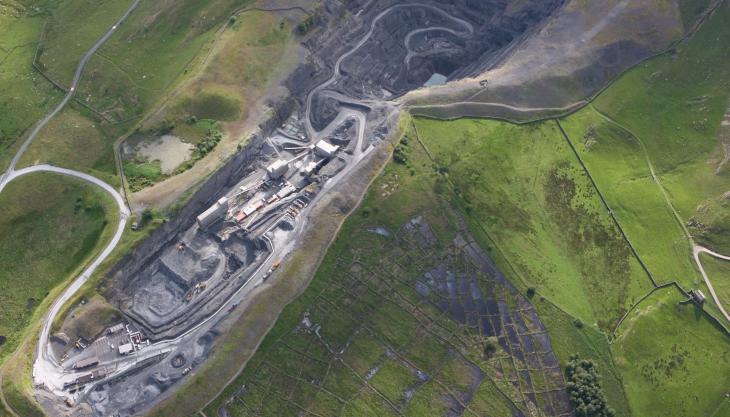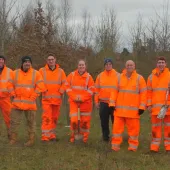Biodiversity success at Swarth Moor SSSI

Tarmac help raise standard of peat bog between Arcow and Dry Rigg quarries in North Yorkshire
ONE of the UK’s most threatened species, the great crested newt, has been recorded in record numbers following the successful restoration of a raised bog between Tarmac’s Arcow and Dry Rigg quarries, in North Yorkshire, as part of the company’s ongoing commitment to supporting wildlife and biodiversity across the UK.
Swarth Moor Site of Special Scientific Interest (SSSI) has recently undergone a conservation project to ‘re-wet’ the bog, after concerns were raised that it was drying out and was increasingly attracting species that would not typically be found in such habitats.
Jointly funded by Tarmac, Natural England, and the Stories in Stone Project, led by ecologists Bowland Ecology and supported by Yorkshire Dales National Park Authority, the ‘re-wetting’ process at the site consisted of creating bunded cells across the surface of the bog which retain water and encourage the establishment of special mosses and plants.
The initial conservation programme was completed in 2021, with the project’s success confirmed by the recording of almost 350 great crested newts, a protected species, across the site and nearby ponds earlier this year.
Additional conservation work on the project included desilting existing ponds, excavating three new ponds and building three large ‘hibernacula’ – places where animals seek refuge over winter, which are made by layering logs, rocks and earth.
A boardwalk was also constructed to allow people to safely observe and monitor the area without disturbing the newly establishing flora and fauna.
Tarmac also funded a Leeds University research project to assess the SSSI and develop a conservation management plan prior to work commencing, which was then carried out by the key partners and lead contractor Conservefor.
Katie Callcutt, restoration technical manager at Tarmac, said: ‘Having supported the re-wetting of the SSSI, it’s been hugely rewarding to see re-establishing populations of protected species including great crested newt on the site. The work with our project partners to protect the peat bog will also critically ensure that it continues to act as a natural carbon sink as we fight climate change.
‘Tarmac are committed to sustainable land stewardship and to leaving a lasting legacy for wildlife and future generations, so it’s great to see these biodiversity success stories, including here at this important site in North Yorkshire.’
Alice Helyar, principal ecologist at Bowland Ecology, commented: ‘It has been a privilege to be involved in this restoration project as part of a committed team to deliver SSSI recovery. Restoration of the bog has not only benefitted a very rare habitat but was also successfully completed with a positive outcome for the resident great crested newt population.’
Member Champion for the Natural Environment at the Yorkshire Dales National Park Authority, Mark Corner, said: ‘We’ve been working on the Swarth Moor restoration project since 2017, dedicating resources in planning, wildlife conservation, and archaeology to help make it a success.
‘There are multiple benefits for biodiversity and it’s significant that the peatland is now capturing and storing carbon again effectively. Swarth Moor is adjacent to Dry Rigg Quarry and, as common land, it’s a really important place for people as well as wildlife. I hope the new viewing platform and boardwalk will help people appreciate its wonders.’









